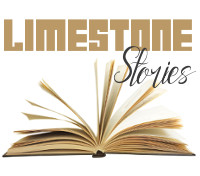- Why Mining Matters
- Jobs
- Safety
- Environment & Operations
- FAQ
- Links
- Fun Stuff
You are here
Glengarry Station
There was a quarry in Glengarry Station that early Scottish settlers used to light on fire!
In the 1800s, there was a limestone quarry at Moiche Hill in Pictou County. (Moiche Hill is called Robert Gordon’s Hill on the 1902 geological map partially shown below. Gordon was one of the area’s earliest settlers, likely arriving in 1802.)
Farmers extracted the limestone because it is a soil sweetener, meaning it increases pH. Limestone is crushed down to powder, calcined and spread on farm fields to improve soil quality. (Calcining means heating a mineral to the point of changing its mineral structure. It is done as part of the process of manufacturing minerals into products. Calcining limestone removes carbon dioxide and leaves behind lime.)
Farmers in the area had an interesting way to do this, however.
The early settlers periodically filled the quarry with hardwood and then blasted large blocks of the limestone onto it. The wood was then lit on fire. After the blocks were cooked, the farmers would crush them, mix them with the ash, and spread the mixture on their fields. (We do not know whether any sort of festival was associated with this activity but it’s hard not to picture a community gathering with everyone watching the huge bonfire late into the night!)
The quarry was about 50 metres long and 3-5 metres deep.
Nova Scotia has had many limestone quarries in the past two centuries. In addition to using it in agriculture, there were many quarries that supplied it to the steel mills in Cape Breton for use as flux, which is used in the smelting process to promote fluidity and remove impurities in the form of slag.
Limestone is currently quarried in Brookfield, Colchester County, at the Lafarge cement plant because limestone is a key ingredient in cement. The plant has been in operation since 1965.


















































































